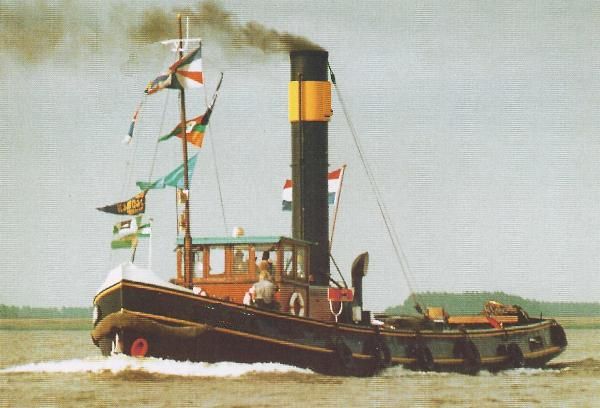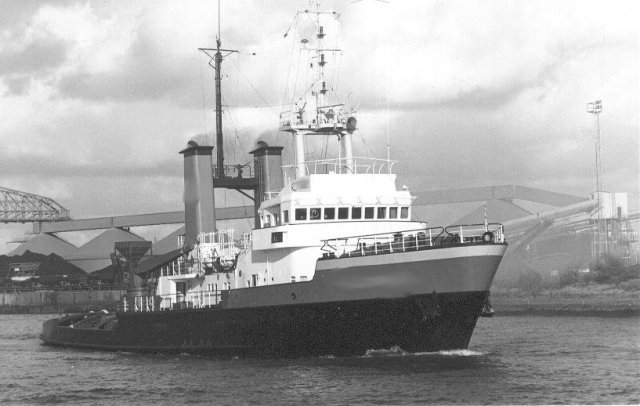-
Posts
3,533 -
Joined
-
Last visited
Content Type
Profiles
Forums
Gallery
Events
Everything posted by amateur
-

ROYAL CAROLINE 1749 by Doris - 1:40 - CARD
amateur replied to DORIS's topic in - Build logs for subjects built 1501 - 1750
This will go into the anals of modelbuilding as the best Royal Caroline ever. Jan- 883 replies
-
- royal caroline
- ship of the line
-
(and 1 more)
Tagged with:
-
Sure you don't use Google picture search ? It is Finland. Jan
-
you should be able to recognize her Actually, you're about halfway, by recognizing her as a dutch tug Jan
-
-
And don't stop too often, or you'll discover that every time you start is just like the first time.... Half an hour every three weeks isn't the right way to go (speaking from personal experience) Jan
- 64 replies
-
was there ever a movie on Minnesota? It's the Russians: Potemkim Jan
-
Yeah, that's what I discovered: Titanic has four funnels (but she was also in a famous movie ) Jan
-
Or is the name of the file just a red herring .... Jan
-
You should rename your file before uploadingh, otherwise it's too simple Jan
-
This game is rapidly changing into 'find were the name is'-game And as you have only one 'non-laker' you decide to concede. We understand ..... Jan
-
I also used Bob's method. I found it useful to mark the centre of the dowel with a small pinhole before starting the tapering. That helped to keep the whole thing more or less centered. Jan
-
Yep, you've seen her before. Thereofre, I should not accept Noordzee as an answer However, as Rode zee (which is the one in the picture) and Noordzee are completely identical (although guys who actually have sailed on her tell that there are differences between the sisters), feel free to present us a great laker Jan
-
it is Jan
-
Ah, that's long ago I have posten one. Here it comes (dont tell Andy/realworkingsailor, he will not like this one )
-
First I thought mediterranean, but then I realized: it looks like a Dutch or German 'kotter'. going through a list of sail Amsterdam and Sail de Ruyter, I came across her name: Thalassa Jan
-
I have way to go..... I used to be a rear admiral Jan
- 1,148 replies
-
Hey, this previous good for nothing post seems to be my 100. I earned my first stripe! btw: Sjors: where did you find this invisible fairy writing your name? Jan
- 1,148 replies
-
Popeye needs some spinach I think..... He's loosing the connection to the real world Jan
- 1,148 replies
-
Something, no matter what, even a pic of popcorn will do Jan
- 1,148 replies
-
A rat-trap? to catch popcorn?? Oh.... I understand... but Sjors is too large for that Jan
- 1,148 replies
-
I think Slagoon actually mentioned her? Jan
-
Oh isn't there a brass ring then?... Bowl of popcorn, then, perhaps? Jan
- 1,148 replies
-
the ZOO, obviously! What nonsense: keeping Andy from tying knots. You guys'll do anything to get your previous post-ranks back! Jan
- 1,148 replies
About us
Modelshipworld - Advancing Ship Modeling through Research
SSL Secured
Your security is important for us so this Website is SSL-Secured
NRG Mailing Address
Nautical Research Guild
237 South Lincoln Street
Westmont IL, 60559-1917
Model Ship World ® and the MSW logo are Registered Trademarks, and belong to the Nautical Research Guild (United States Patent and Trademark Office: No. 6,929,264 & No. 6,929,274, registered Dec. 20, 2022)
Helpful Links
About the NRG
If you enjoy building ship models that are historically accurate as well as beautiful, then The Nautical Research Guild (NRG) is just right for you.
The Guild is a non-profit educational organization whose mission is to “Advance Ship Modeling Through Research”. We provide support to our members in their efforts to raise the quality of their model ships.
The Nautical Research Guild has published our world-renowned quarterly magazine, The Nautical Research Journal, since 1955. The pages of the Journal are full of articles by accomplished ship modelers who show you how they create those exquisite details on their models, and by maritime historians who show you the correct details to build. The Journal is available in both print and digital editions. Go to the NRG web site (www.thenrg.org) to download a complimentary digital copy of the Journal. The NRG also publishes plan sets, books and compilations of back issues of the Journal and the former Ships in Scale and Model Ship Builder magazines.




